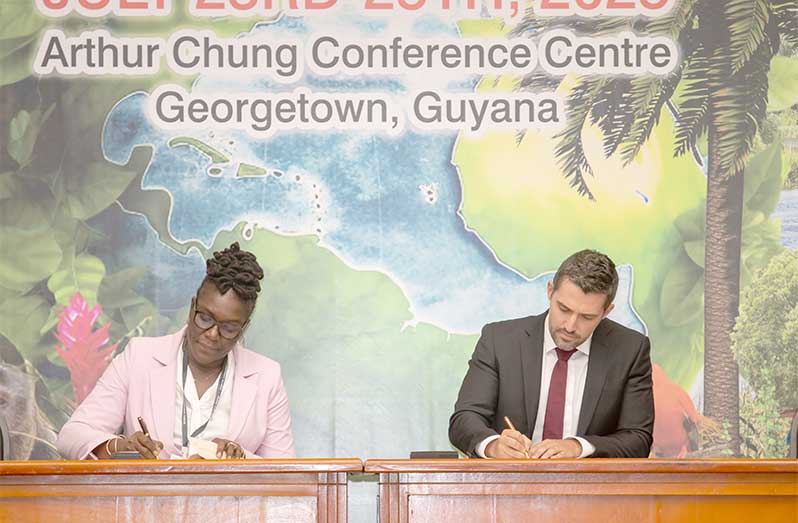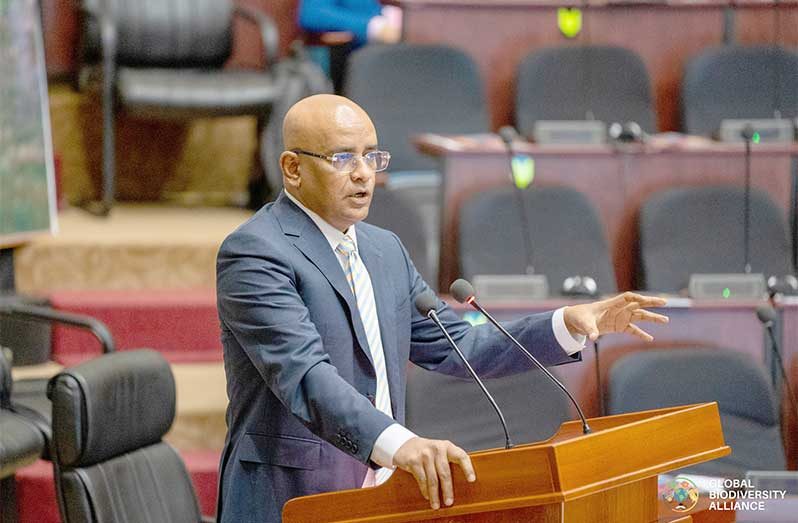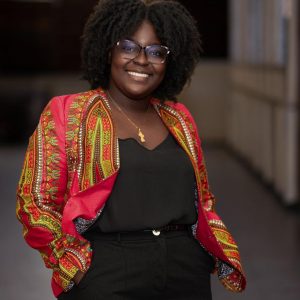–Jagdeo reminds of country’s ‘modest’ beginnings as it takes on new feat to generate biodiversity financing
GUYANA will now have access to cutting edge technology to support enhanced conservation efforts of its biodiversity, following the signing of a Memorandum of Understanding (MoU) with the Yale Center for Biodiversity and Global Change on Wednesday at the inaugural global biodiversity summit being held this week.
The partnership aims to support Guyana’s leadership in the Global Biodiversity Alliance. The Yale Center will provide scientific and organizational guidance, particularly in decision-making around protected areas and low-carbon development strategies.
The country will establish a world-class International Centre of Excellence for Biodiversity Research and create a National Biodiversity Information System (NBIS) this is expected to be outfitted with data dashboards and Geographic Information System (GIS) layers to inform on-the-ground monitoring.
The partnership will apply biodiversity data and tools for conservation impact and decision-making, including leadership on the Global Biodiversity Alliance.
Guyana plans to expand its protected areas to 30 per cent by 2030 and develop broader low-carbon development strategies, leveraging its already existing gains and leadership.
“We’re taking on a big task globally,” the country’s Vice President Dr. Bharrat Jagdeo said, just before the historical signing.

Dr. Jagdeo noted that while Guyana has been able to achieve great momentum in entering the carbon market to earn monies for its standing forest, there is still no compliance market that would allow for the country to earn even more for its trees.
“Right now there’s no market for even forest carbon, a compliance market… much less a market for biodiversity services.”
In November 2009, then-President Jagdeo and the former Minister of the Environment and International Development of Norway, Hon. Erik Solheim, signed a historic Memorandum of Understanding (MoU).
In that agreement, Norway committed to providing Guyana up to US$250M by 2015 for avoided deforestation once certain performance indicators are met.
It was the first international commitment of financial support to the Low Carbon Development Strategy (LCDS) and was the first partnership of its kind between a developed and developing country.
“Do not be deterred by modest beginnings. When we started building the Low Carbon Development Strategy (LCDS), we had an even smaller group and we were less resourced at the time.”
Guyana, through its now updated LCDS 2030, became the first jurisdiction in the world to receive verified carbon credits for its efforts in reducing emissions from deforestation and forest degradation. The country sold carbon credits for US$750 million to oil giant Hess Corporation over 10 years.
Dr. Jagdeo explained that the LCDS was based on rigorous research and technical work, protecting entire ecosystems rather than isolated pilot projects, strong monitoring, reporting, verification systems, and involvement of locals, which in Guyana’s case is its Indigenous peoples.
“When we were being labelled by the international community, to focus on pilots, we recognised that the forest could not be preserved unless you preserve all of it. For this to have any value for forest carbon, you had to have a robust monitoring, reporting, and verification system, which we built,” the vice president said.
GLOBAL POLITICAL SUPPORT
Now with the country looking to establish a mechanism to earn from its biodiversity, political support will be required.
“We are here now to look at how we get political support for the initiative; how we can marshal all of these things that we have done before and that we will do, into clear, concise arguments that will allow us to get more political support globally.”
He added: “I think we can be widely successful if we are focused. We had to keep that focus very tight when we were building our model with all sorts of distractions coming our way.”
The country is looking to secure much needed global financing to craft a model for biodiversity credits and according to Dr. Jagdeo, the model will need to be scalable, adaptable, and replicable across regions and ecosystems, working not only for Guyana but other nations looking to bolster its conservation efforts.



.jpg)








